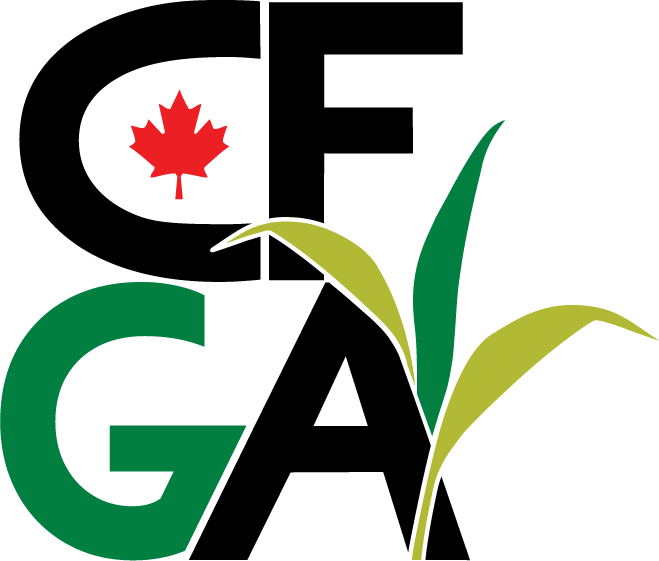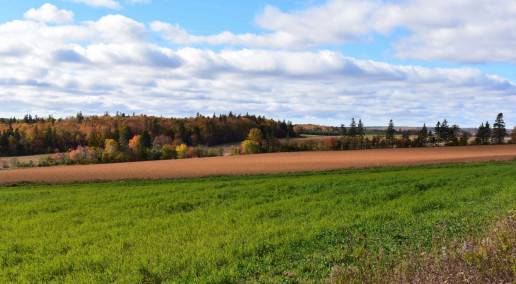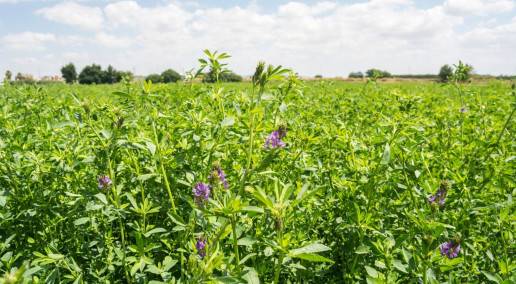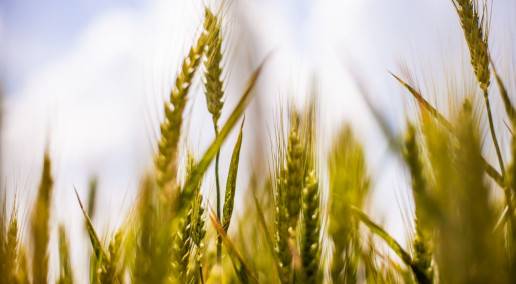Speakers:
- Moderator: Ray Robertson
- Josh Callen
- Alain Beaulieu
- Ian MacDonald
- Valérie Poulin
- Jess Vishruck
Jess Vickruck is a research scientist with Agriculture and Agri-Food Canada based in Fredericton, N.B. Her research is primarily interested in how wild bees use agricultural landscapes and how we can manage those landscapes to increase wild bee biodiversity and the pollination services those bees bring.
Valérie Poulin is a commercial hay and dairy producer. Their farm now produces 150,000 small bales a year and has a total of six employees.
Alain Beaulieu began his career in the hog sector. He then started a career in agricultural education, first in dairy production and then Agricultural Management (GTEA). He has been a member of the Weedon CUMA since 2008, a director from 2016 to 2019 and president since 2020.
Josh Callen started in hay production and worked in every part of the business. He joined The Hoyt Report in August 2018.
Sessions Questions:
Are there any updates on shipping south of the border?
Shipping is starting to improve in California, but it’s nowhere near where it should be.
Why is there greater bee diversity in cereal sites vs rangeland?
This may be due to the rotation of crops, but it will take multi-years to analyse and verify.
What does moderate grazing mean? Is it intensive or open range?
Moderate grazing has not been investigated specifically, but it is not typically an intensive system.
What is your average yield in tons of dry matter per hectare (TDM/ha)? How much was it in the worst year of drought?
In the worst year of drought, even though it was dry, we still had dew because of our hilly place, so not a bad drought. Our worst yield was 150 pounds of bales per acre, so 2.8 tons per hectare. Our highest yield this year was 240 pounds of bales per acre.
What changes do we see in haying practices to address climate change?
In the U.S. there is a lot more talk of cover crops to sequester carbon, and setting up carbon exchanges using carbon credits. We especially see changes in places that are more water sensitive.
When drying hay, what advice do you give?
It is difficult to dry hay below 20 per cent in the field, unless the weather is exceptionally nice. To sell hay it must be below 12 per cent. Drying with warm air helps to dry properly, hence the dryer equipment.
How do you cope with Labour shortages?
The automation of haying equipment helps immensely without much labour. We should expect to see robotics come into use in the next few years.
What are the threats and strengths of the forage industry?
There are major challenges with the commercial market. Alain says they started shopping for fertiliser for next year this fall, but the price of nitrogen has increased by 50 per cent. Because they don’t want too much legume in the mix, they must fertilise.
Josh says that there has been a shift to a grain heavy diet in dairy rations, and the amount of alfalfa has shrunk. Used to feed 10 pounds per head per day, now it’s only two to five pounds per head per day. The environmental benefits are lost with the loss of alfalfa. This is a long term threat.
Ian says that cover crops have been going into bunkers because it doesn’t return revenue, but it can provide haylage in uncertain times.
Do you anticipate change in the function of landscapes with the change in canola and winter wheat, or does it have to be perennial?
To get bees to survive, we can’t till because we don’t want to destroy their nests.
Does adding red clover with winter wheat provide habitat?
Yes, adding red clover with winter wheat provides habitat.
Do you have any advice for new forage producers?
Valerie’s advice is to work with good people on your team, and to work with supportive experts. Alain says that in any business you have to make sure your investment is worth it. There’s a minimum to make it worth it, you need to produce at least 25, 000 to 30, 000 bales.
Are there policies needed to transition low-diversity rotation to a more diverse resilient system over time?
Farmers will make the step when they see the benefits, and low risks. For example, look at coop in Ontario for mentorship of hay growing.
Does the revamped forage insurance program provide similar coverage for annual crops?
The crop insurance agents say it pays for itself each year, so farmers should give this a try. We need a better long-term solution, like going from grain back to hay for sustainable farms.
Hyperlinks:
Josh: https://www.canadianfga.ca/staff/josh-callen-30/
Alain: https://www.canadianfga.ca/staff/alain-beaulieu-9/
Valerie: https://www.canadianfga.ca/staff/valrie-poulin-7/
Jess: https://www.canadianfga.ca/staff/jess-vickruck-29/
Back to Most Popular



Leave a Comment